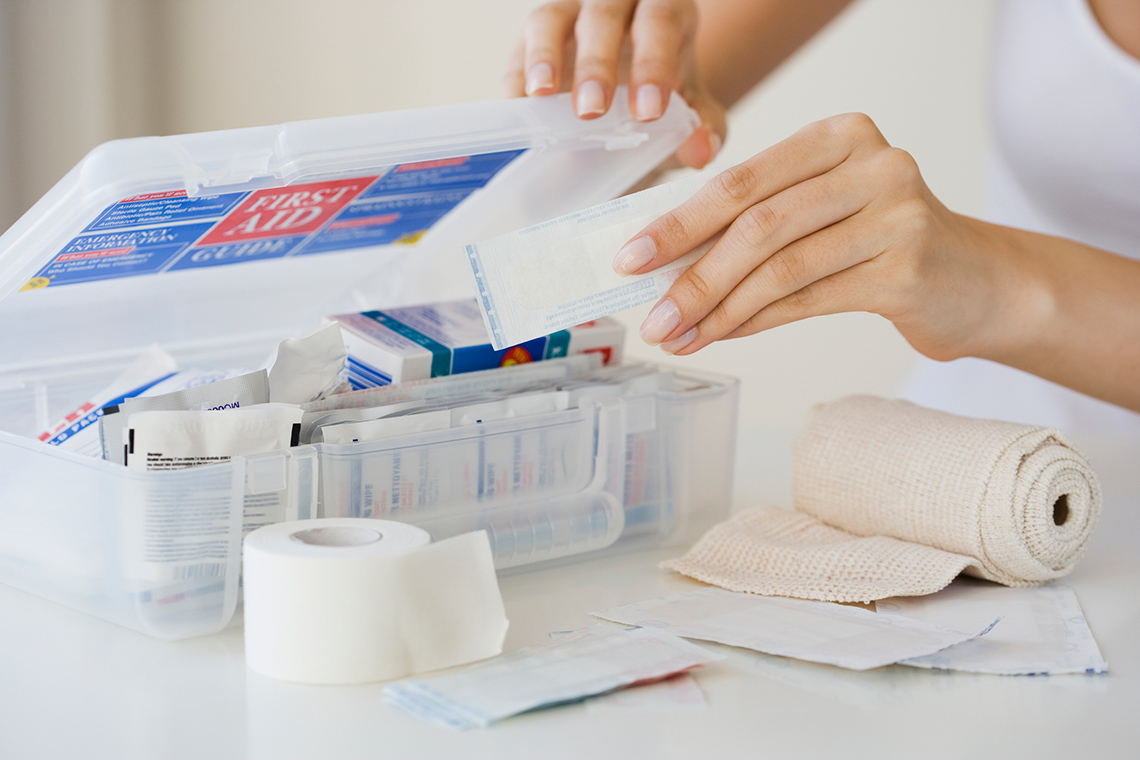Minds On
Recognizing common athletic injuries

Despite our best efforts, unfortunately injuries may occur as a result of participating in sport and physical activity.
This shouldn’t deter people from enjoying being active daily.
Recognizing what the injury is and how to properly respond can go a long way to improving a person’s recovery time.
Press the following tabs to access some common injury categories.
For each term, select the corresponding injury.
Action
Responding to minor injuries

Did You Know?
Rowan's Law
In Ontario, Rowan’s Law establishes policies for individuals to manage possible concussions and related injuries. According to the Ontario Physical Activity Safety Standards, “Students must not participate in the activity until they receive information on concussion prevention specific to the activity, inherent risks of the activity (for example, outline possible risks and ways to minimize the risks), and procedures and rules for safe play. Students must receive instruction on the importance of reporting symptoms related to a suspected concussion.”
Recognizing when an injury has occurred is the first step to recovery.
A simple treatment option for those who sustain an injury is to follow the ICER method, which is:
- Ice
- Compression
- Elevate
- Rest
This is a general rule that help people respond to minor first aid situations. If someone thinks there might be a more serious injury than they can manage, it is always best to seek advice from an adult who may make the decision to seek more advanced medical care.
First aid kits
Another way to manage athletic injuries is to have a well-stocked first aid kit nearby to assist with treatment.

Common items found in a first aid kit include:
- First aid manual that explains how to treat minor injuries
- Tweezers that can help remove items such as dirt, glass, and splinters
- Alcohol swabs which help to clean a cut before applying ointment or a bandage
- Adhesive bandages in a selection of different sizes – these are applied after the alcohol swabs
- Gauze bandages which can absorb blood by wrapping around the injury
- Medical tape which can secure the gauze bandage in place
- A gel pack that becomes cold when the back is squeezed – this can be used to reduce swelling of a muscle or a joint by placing the pack on the injury
- Elastic bandages that help to keep a joint from moving or reduce any swelling by putting light pressure on the injury
Being well prepared will help ensure safe participation in any activity.
Pause and Reflect
Pause and reflect
Would you know where to find the nearest first aid kit?
Do you know what supplies are found within the kit?
Consider the physical activities young people enjoy participating in throughout the year.
If you had to put together a first aid kit, which of these items would you include?
Click on each item that you would place in your first aid kit.
For each item that you include, consider the following:
- How many of this item would you include? Why?
- Would you include more than one size of this item, if possible? Why?
- Where would you suggest this first aid kit should be kept? Why?
- What type of injury would each item be used for?
Complete the My First Aid Kit Chart in your notebook or using the following fillable and printable document. If you would like, you can use speech-to-text or audio recording tools to record your thoughts.
|
How many of each item would you include? Why? |
|
|
Would you include more than one size of this item, if possible? Why? |
|
|
Where would you suggest this first aid kit should be kept? Why? |
|
|
What type of injury would each item be used for? |
Press the ‘Activity’ button to access My First Aid Kit Chart.
Consolidation
Review your learning

Use your learning to match the injury or first aid solution for each situation.
Select the correct answer, then press ‘Check Answer’ to see how you did.
Moving safely!
It is recommended that elementary aged children receive at least 20 minutes of moderate to vigorous physical activity during each day. This can be accomplished in a variety of different ways – physical education class, classroom fitness breaks, at home physical activity etc.
It is important that this physical activity is done in safe environments. You have learned of the importance of leading an active lifestyle, how to apply some safety strategies to minimize injuries during physical activities, and ways to treat these common injuries.
With this knowledge, complete the following:
Create a safety advertisement meant for children your age that would provide the necessary information about how to be safe while being active.
Be sure to include in your safety advertisement, the following information:
- common injuries that occur and how these injuries can possibly be limited
- the importance of a first aid kit
- how to treat the common injuries
Your advertisement could be in the form of a poster, a video message, an audio message, or in a form of your choice.
Reflection
As you read through these descriptions, which sentence best describes how you are feeling about your understanding of this learning activity? Press the button that is beside this sentence.
I feel…
Now, record your ideas using a voice recorder, speech-to-text, or writing tool.